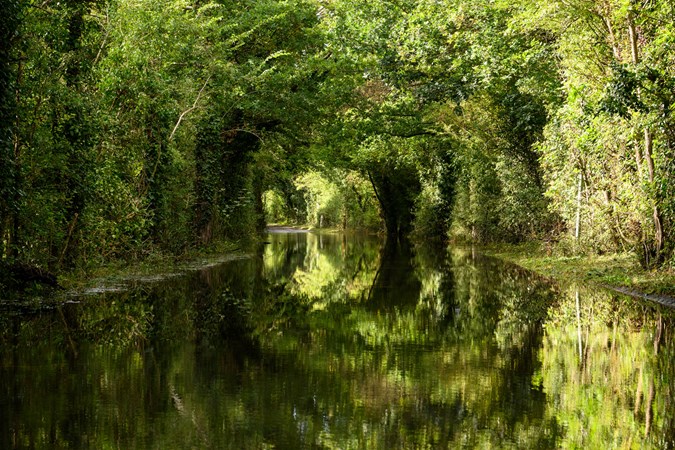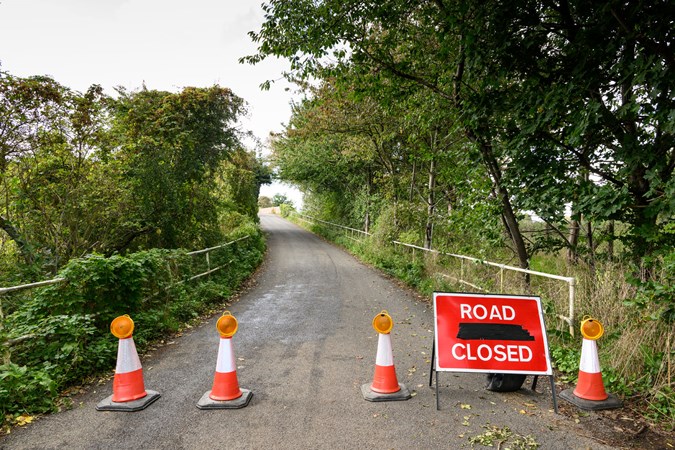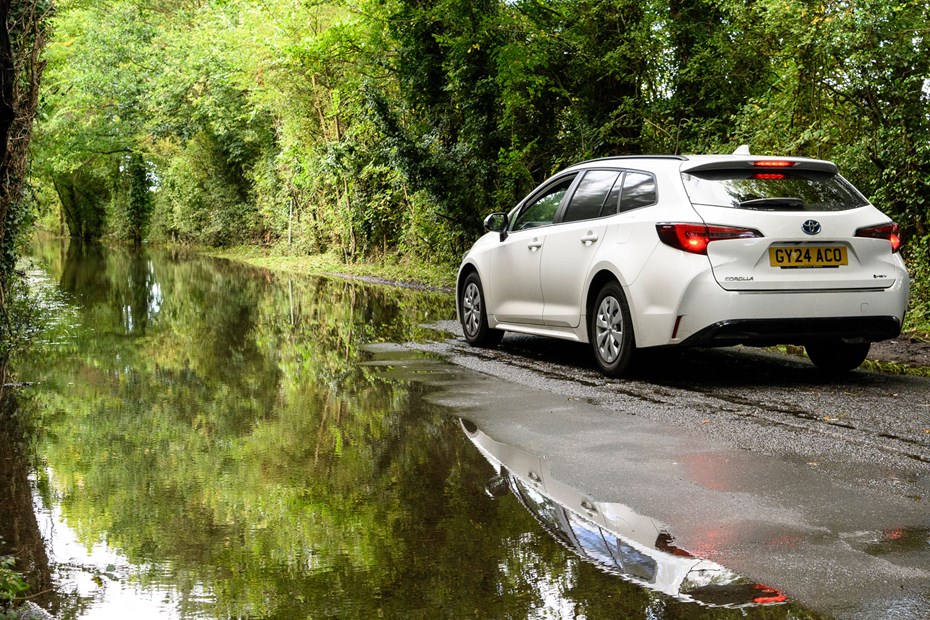When heavy rain hits the UK it’s far more than just an inconvenience, especially for those facing flooded country roads or waterlogged streets. Even the best 4x4s can find themselves in trouble in deeper water, and experienced drivers aren’t immune to tricky situations either. Taking a bit of extra care and preparing for the unexpected can make all the difference when dealing with floodwater.
While we strongly advise avoiding floodwater at all costs, we all know the UK’s unpredictable weather has other plans. So, to help keep you and — most importantly — your car safe, we’ve put together a guide full of essential tips for those moments when nature throws a curveball. If you want to find more advice on driving through adverse weather conditions, check out our guide on winter driving.
Should you drive through floodwater?
As a rule of thumb, no, you should not attempt to drive through floodwater. It not only puts you at risk but also your vehicle. Believe it or not, even a few centimetres of water can cause serious damage to a car’s electrics or engine and in more severe cases can sweep your car away.

Water can be very deceiving — it may look shallow but can hide hazards like potholes or submerged debris.
It doesn’t take much to lose control of your vehicle in wet conditions. If the water appears deep or even fast-moving it’s better to turn around and find an alternative route. Your car, and your wallet, will thank you later.
How to drive through floodwater?
If you do find yourself in the unavoidable situation of driving through heavily flooded roads, don’t panic. To make the experience a little less daunting here is what you need to do:
Access the depth and flow: Before attempting to drive through, check the water depth. If it appears too deep or fast-moving, it’s best to avoid it.
Proceed slowly and steadily: If you decide it’s safe, engage first gear and drive slowly. Keep your momentum consistent without stopping or changing speed abruptly. If you’re driving a manual car, you may need to slip the clutch to maintain control through floodwater. For automatic vehicles, select the lowest possible gear and maintain steady pressure on the accelerator to keep the vehicle moving without stalling.
Keep revs high: By keeping your engine revs high, you minimize the chance of water entering the exhaust pipe, which could cause damage.
Avoid sudden movements: Do not brake or accelerate suddenly while in the water, as this can lead to loss of control.
What speed should you drive through floodwater at?
When driving through floodwater, you should aim to keep your speed at a crawl — around 3-4mph. This slow pace helps reduce the risk of water entering the engine and allows you to maintain better control of the vehicle. Moving too fast can create a bow wave, which could cause water to surge up and into your car’s air intake, leading to costly damage. Take it steady and avoid the temptation to rush through — it’s all about keeping the car steady and safe.
What depth floodwater can you drive through?
We can’t stress enough that driving through floodwater is risky, but most experts recommend not tackling anything deeper than 100mm to reduce the chances of damaging your vehicle. While some vehicles are built to handle deeper water, even the best SUVs or off-roaders aren’t immune to serious issues like engine failure or electrical faults. No matter how capable your vehicle is, it’s best to play it safe and avoid deep water altogether.
What should you do after driving through a flood?
Once you’re clear of the floodwater, gently press the brake pedal a few times to help dry out your brakes and ensure they’re working properly. If you’ve driven through a significant amount of water, it’s a good idea to book your car into a garage for a thorough check-up. This will help ensure that key components, like the brakes, electrics, and engine, haven’t suffered any hidden damage. Although any damage may not be immediately apparent, it is better to be safe than sorry.
How do I know if water got into my engine?
If water is in your engine, you’ll likely notice some tell-tale signs. These include:
Difficulty starting the car: Water in the engine can prevent the vehicle from starting or cause it to sputter and stall.
Strange noises: A knocking or unusual sound coming from the engine may indicate water has entered the combustion chamber.
Exhaust smoke: White smoke from the exhaust, especially when the engine runs rough, can suggest water is in the cylinders.
Loss of power: A noticeable reduction in the engine’s power, acceleration, or overall performance could be due to water interfering with the engine’s components.
What happens if the car breaks down halfway through?
If your car breaks down halfway through floodwater, don’t panic. First, switch on your hazard lights to alert others. Call roadside assistance or emergency services using your mobile, and if it’s safe to do so, exit the car and move to higher ground. If the water level isn’t rising, stay in the car and wait for help. Avoid restarting the engine as it could cause further damage, and make sure you’re safe first and foremost until help arrives.
Can I drive an electric car through floods?
The idea of driving an electric vehicle with a hefty battery through water can seem nerve-wracking. Surprisingly, though, it’s possible just like with traditional cars — but not recommended. EVs are cleverly designed with waterproofing around the battery and electrical components, making them actually quite safe in wet conditions. Although the electrics are protected, as mentioned earlier it is important to avoid driving through floodwater in most cases.
Are you insured if you drive through floodwater?
Most comprehensive car insurance policies will cover flood damage, but it’s important to be aware of a few key factors. If you drive through floodwater, particularly if there were warnings or road closures, your insurer may consider this negligence and could deny your claim.

Additionally, while damage from water entering the engine or damaging electrics is often covered, some insurers may not pay out for issues related to general wear and tear or pre-existing problems. Always check your policy details to ensure you’re covered, and when in doubt, reach out to your insurer before driving through flood-prone areas.
Just so you know, we may receive a commission or other compensation from the links on this website - read why you should trust us.








